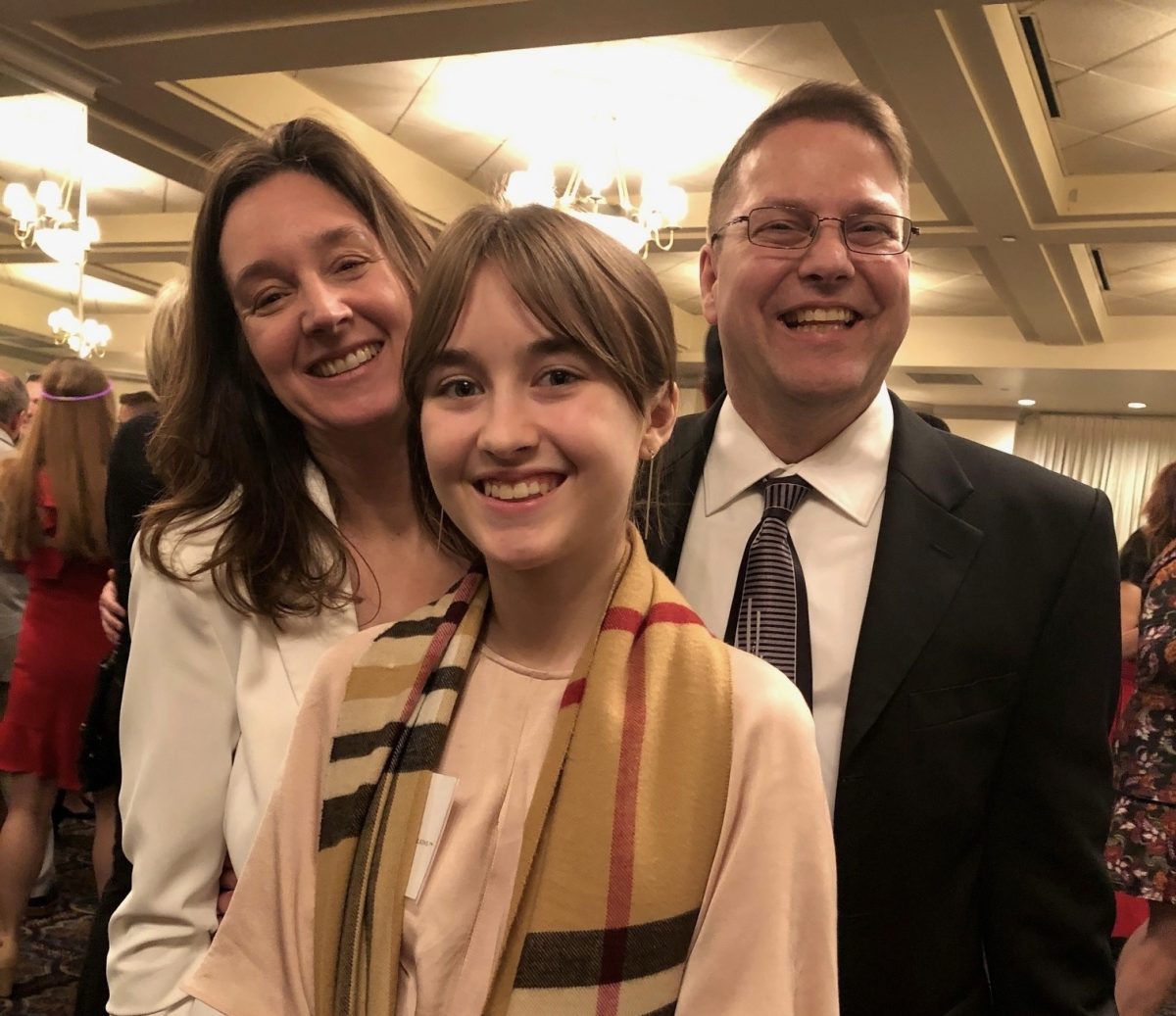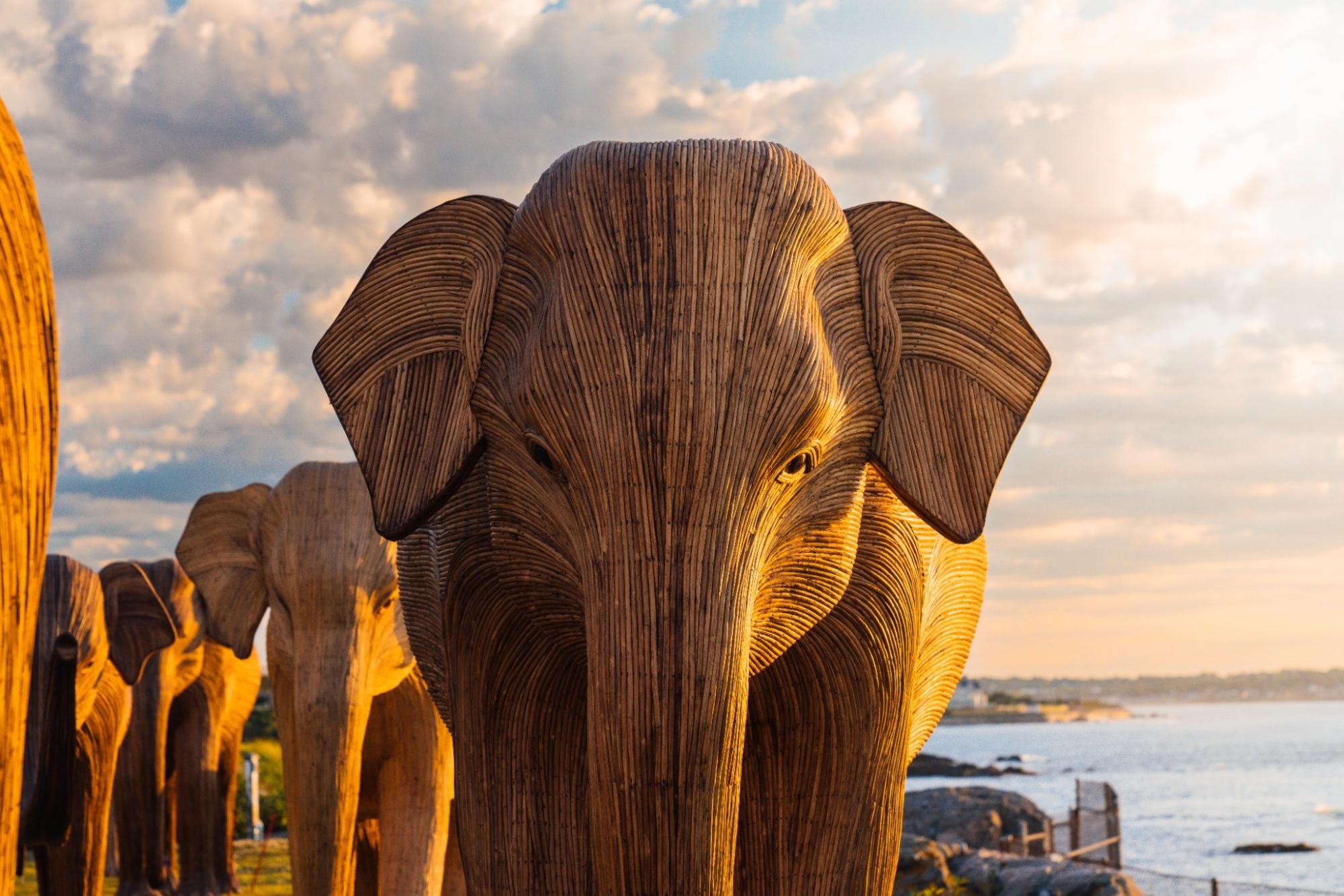
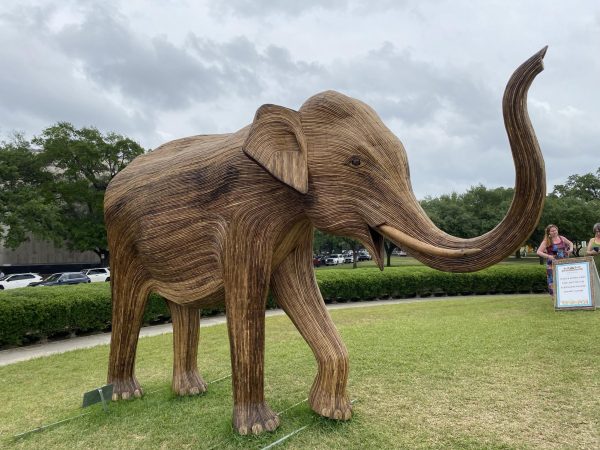
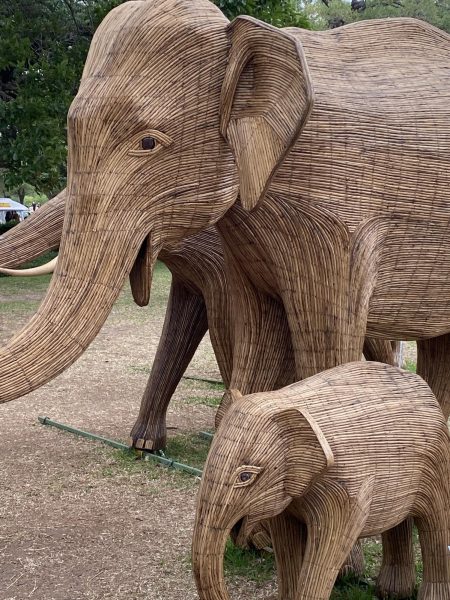

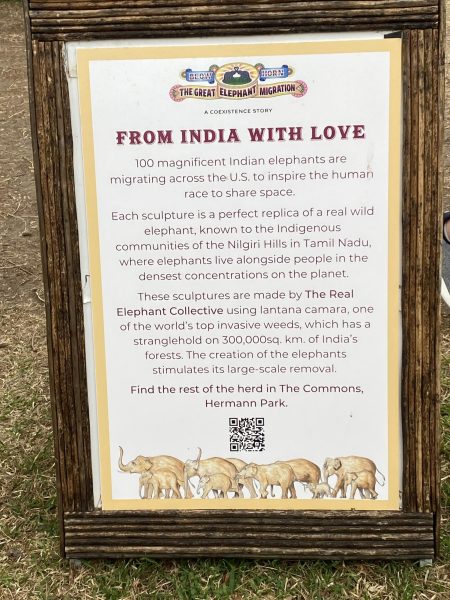
HOUSTON— A herd of 100 life-sized elephant sculptures has arrived at Hermann Park, bringing The Great Elephant Migration to Houston for the first time. This free, month-long outdoor exhibit, running from April 1 to April 30, 2025, highlights conservation efforts, public art, and environmental education.
The handcrafted sculptures, made by Indigenous artisans from India’s Nilgiri Biosphere Reserve, are constructed from Lantana camara, an invasive plant species that poses a threat to ecosystems in both India and Texas.
“This exciting opportunity was brought to the attention of Hermann Park Conservancy by the leading contributor to this stop on the exhibition – Dunwoody Charitable Foundation,” said Cara Lambright, president and CEO of Hermann Park Conservancy. “From there, many conversations were had with The Great Elephant Migration team at Elephant Family to learn more about the exhibit and how Hermann Park could play a hosting role in its Houston stop.”
A Monumental Installation in Hermann Park
Most sculptures will be displayed in The Commons, Hermann Park’s recently revitalized area, with smaller groups placed at the Houston Museum of Natural Science and Texas Medical Center. The largest sculpture, a 10-foot-tall, six-ton model of Matt, a renowned Kenyan elephant, will serve as the exhibit’s centerpiece.
“Hermann Park is an excellent home for The Great Elephant Migration for a multitude of reasons,” Lambright said. “Hermann Park is a beloved destination in the City of Houston, with more than six million visitors every year. People come from all across the Greater Houston area, and outside the city limits too, to enjoy this beautiful public green space and the attractions within it.”
She also noted that The Commons, which opened in April 2024, provides an ideal setting for the exhibit, offering expansive and accessible grounds.
Months of Planning and Collaboration
Hosting a public art installation of this magnitude required extensive planning and collaboration. The Hermann Park Conservancy spent more than six months working alongside Houston Parks and Recreation, the Houston Museum of Natural Science, and other local institutions to ensure a seamless experience for visitors.
“Many conversations and meetings have been held over the past six-plus months to make sure all the bases are covered, with discussions covering topics such as site preparation, visitor management, security, parking, promotion, programming, volunteers, and many more,” Lambright said.
She credited support from The Great Elephant Migration team, the Houston Parks and Recreation Department, Houston Museum of Natural Science, Texas Medical Center, and local partners as key contributors in making the exhibit possible.
Blending Art, Conservation, and Public Engagement
Beyond its visual impact, The Great Elephant Migration encourages visitors to reflect on conservation, sustainability, and wildlife preservation. The exhibit’s use of Lantana camara brings attention to the ecological challenges posed by invasive plant species, which affect both Indian and Texan ecosystems.
“By hosting The Great Elephant Migration, Hermann Park Conservancy underscores its dedication to public art and environmental stewardship,” Lambright said. “The elephant sculptures, crafted from the invasive Lantana camara plants, highlight the importance of addressing ecological challenges in creative and engaging ways to spur conversation.”
The exhibit aligns with Hermann Park Conservancy’s broader commitment to conservation, as the organization actively manages invasive species within the park to preserve native grasslands, prairies, and wooded areas.
Public Excitement and Community Engagement
While the exhibit has yet to open, interest in the event has already been overwhelming.
“We have received calls and emails wanting to learn more, seen hundreds of shares and comments on our social media posts, and responded to many inquiries from people wanting to volunteer,” Lambright said. “We have a feeling that the community is really going to enjoy seeing these stunning elephant sculptures throughout the month of April.”
Throughout April, Hermann Park Conservancy will host a variety of interactive programs, workshops, and collaborations with organizations such as Asia Society, Houston Public Library, and the Houston Museum of Natural Science. The full programming schedule will be available at hermannpark.org/elephants.
A Lasting Impact on Houston’s Community
The arrival of The Great Elephant Migration is expected to attract thousands of visitors, offering a unique opportunity to experience art as a tool for environmental education.
“The Great Elephant Migration goes beyond being an art installation – it serves as a call to action and a place to experience joy,” Lambright said. “We hope that visitors will be inspired to reflect on their relationship with the environment and wildlife and that the experience helps to foster a community more engaged in conservation efforts.”
Community members interested in supporting future public art and conservation efforts can do so by volunteering, attending events, or donating to Hermann Park Conservancy.
For more information about the exhibit and related programming, visit hermannpark.org.


















